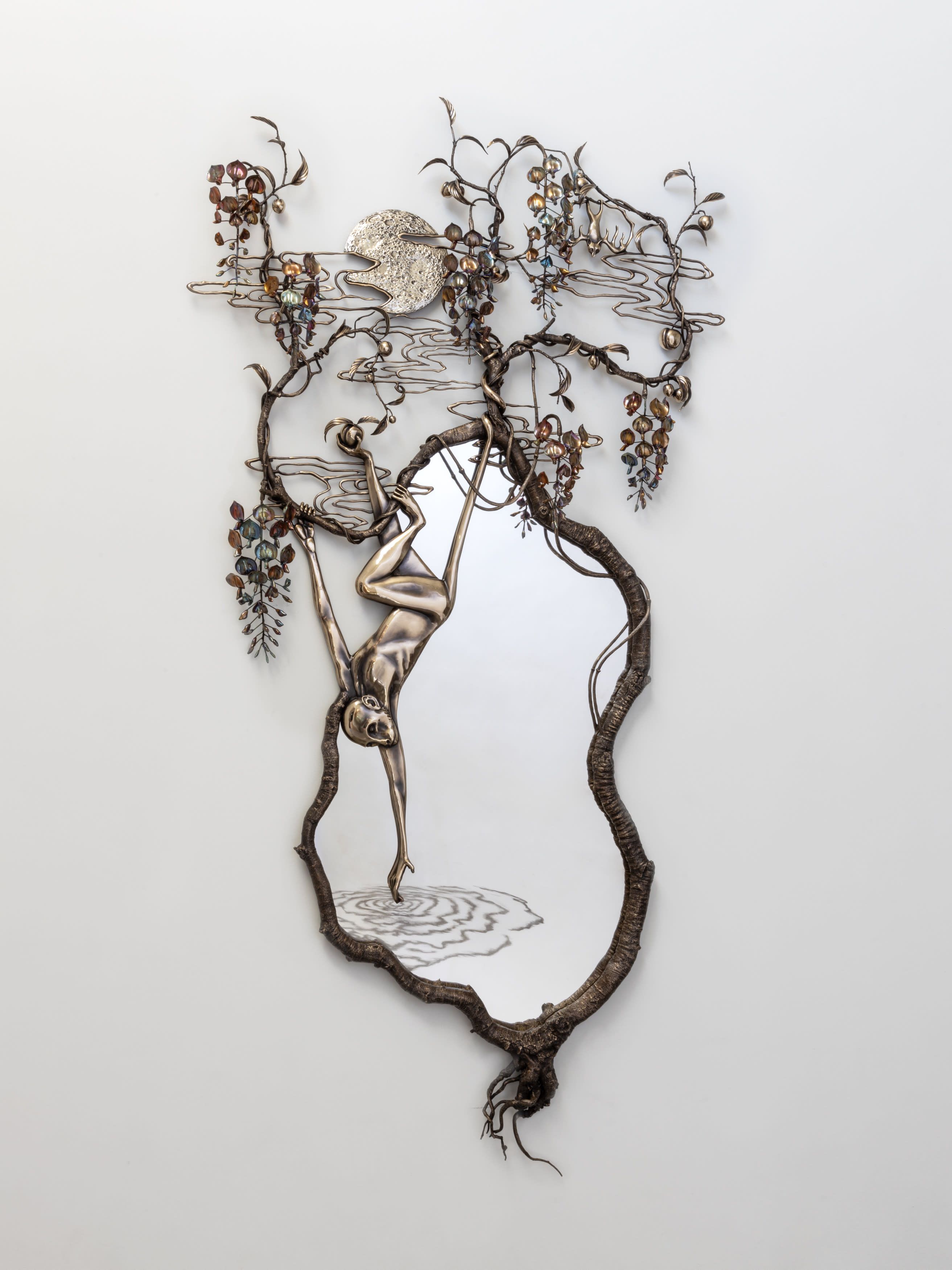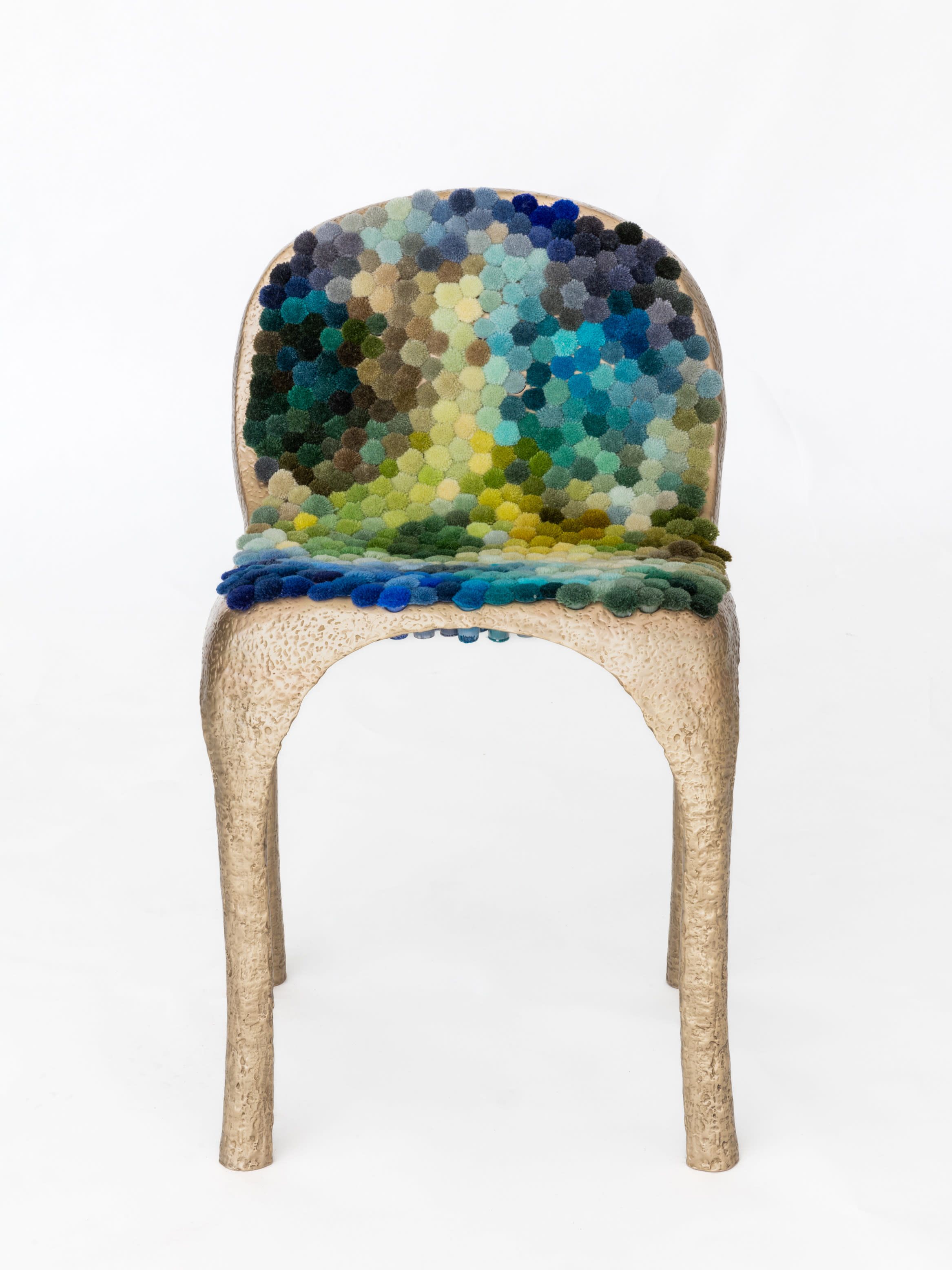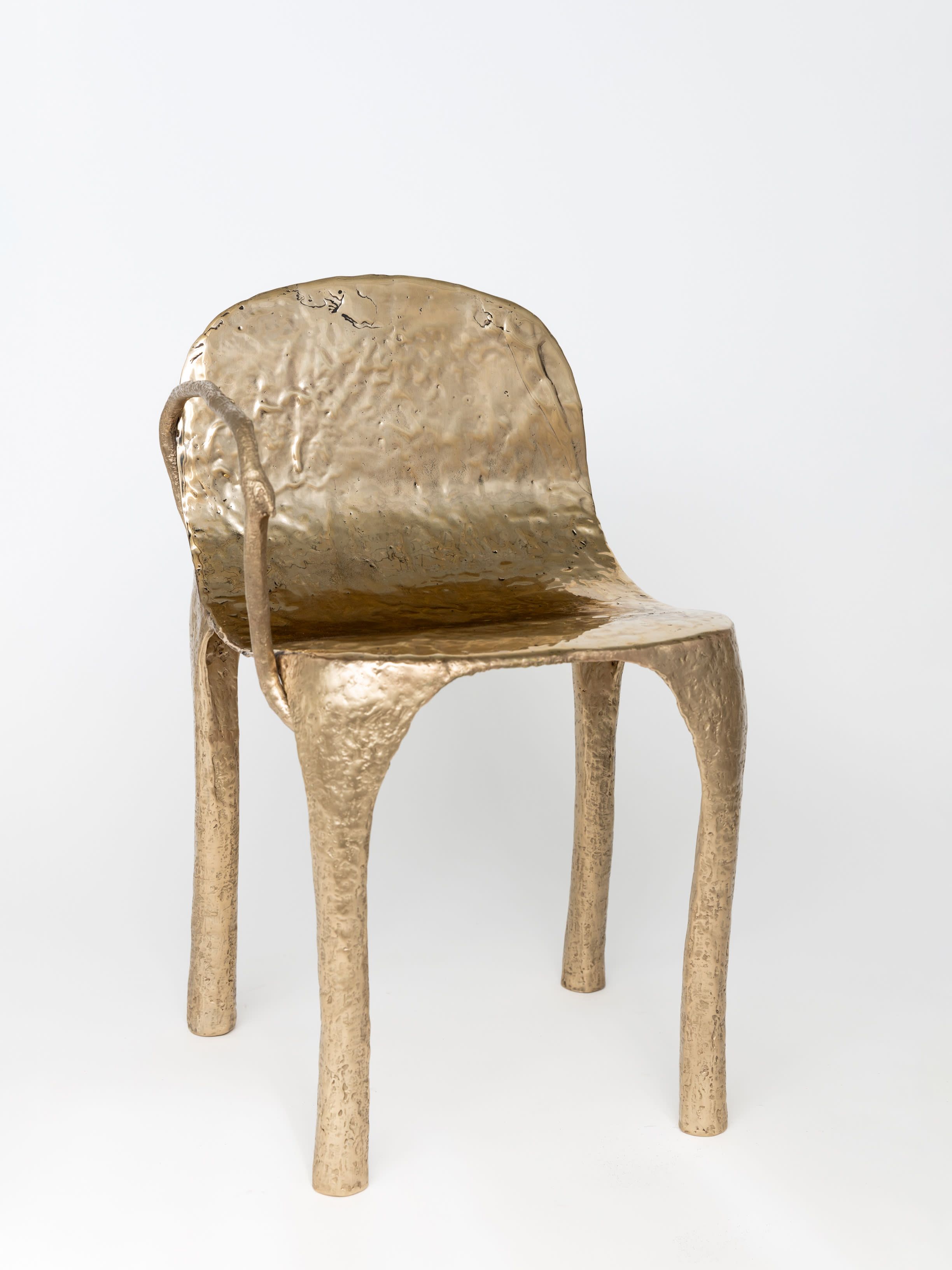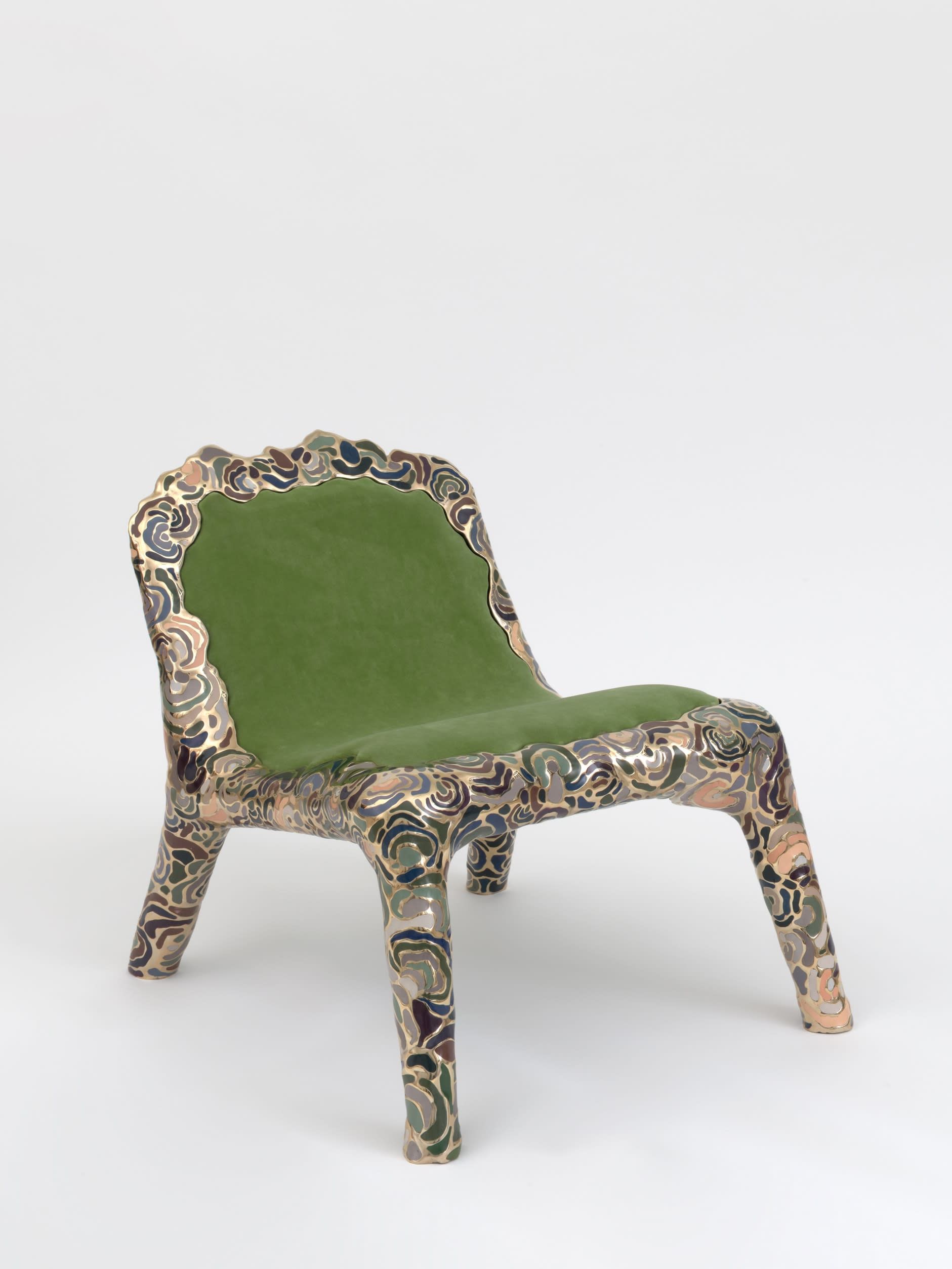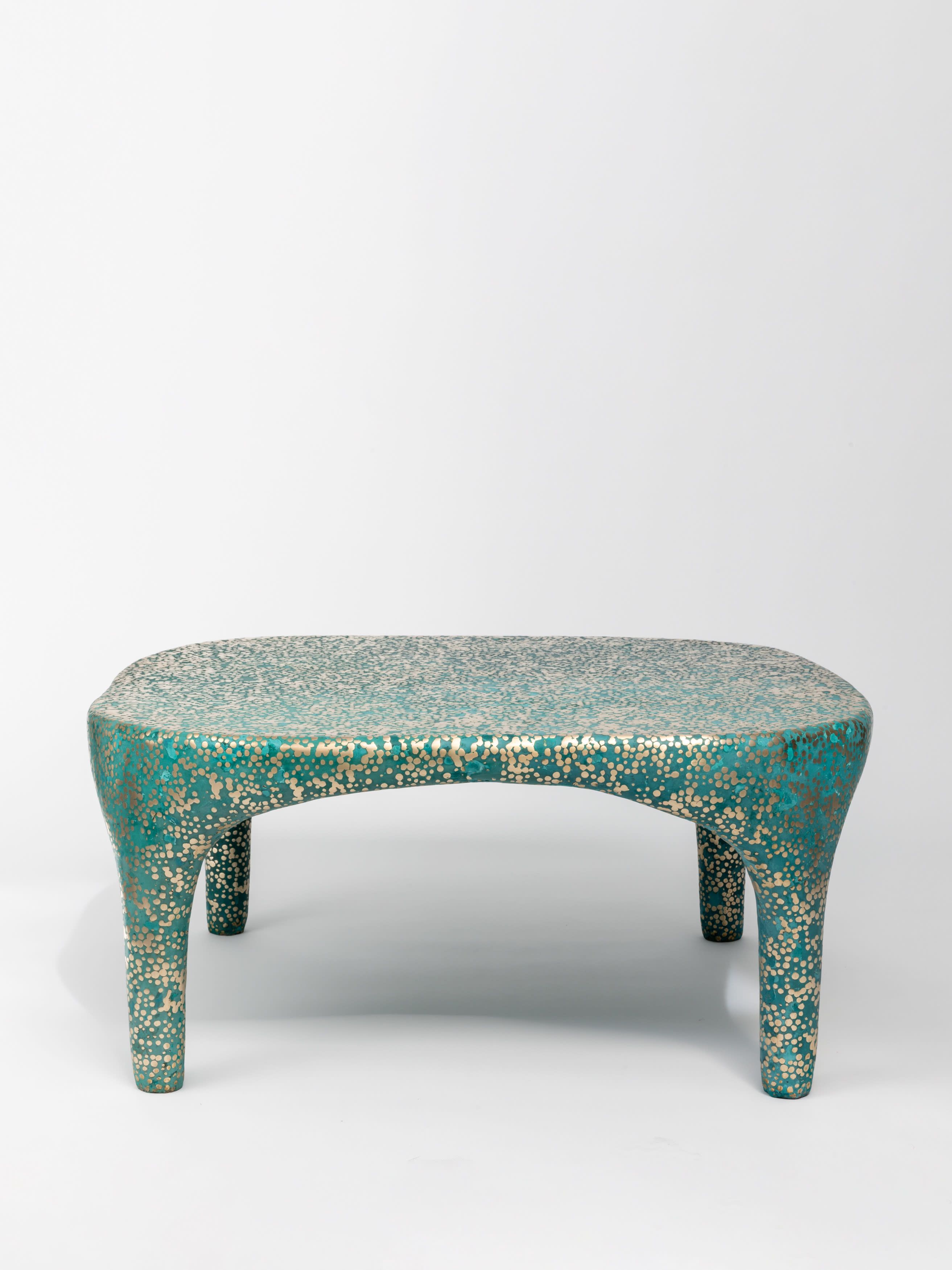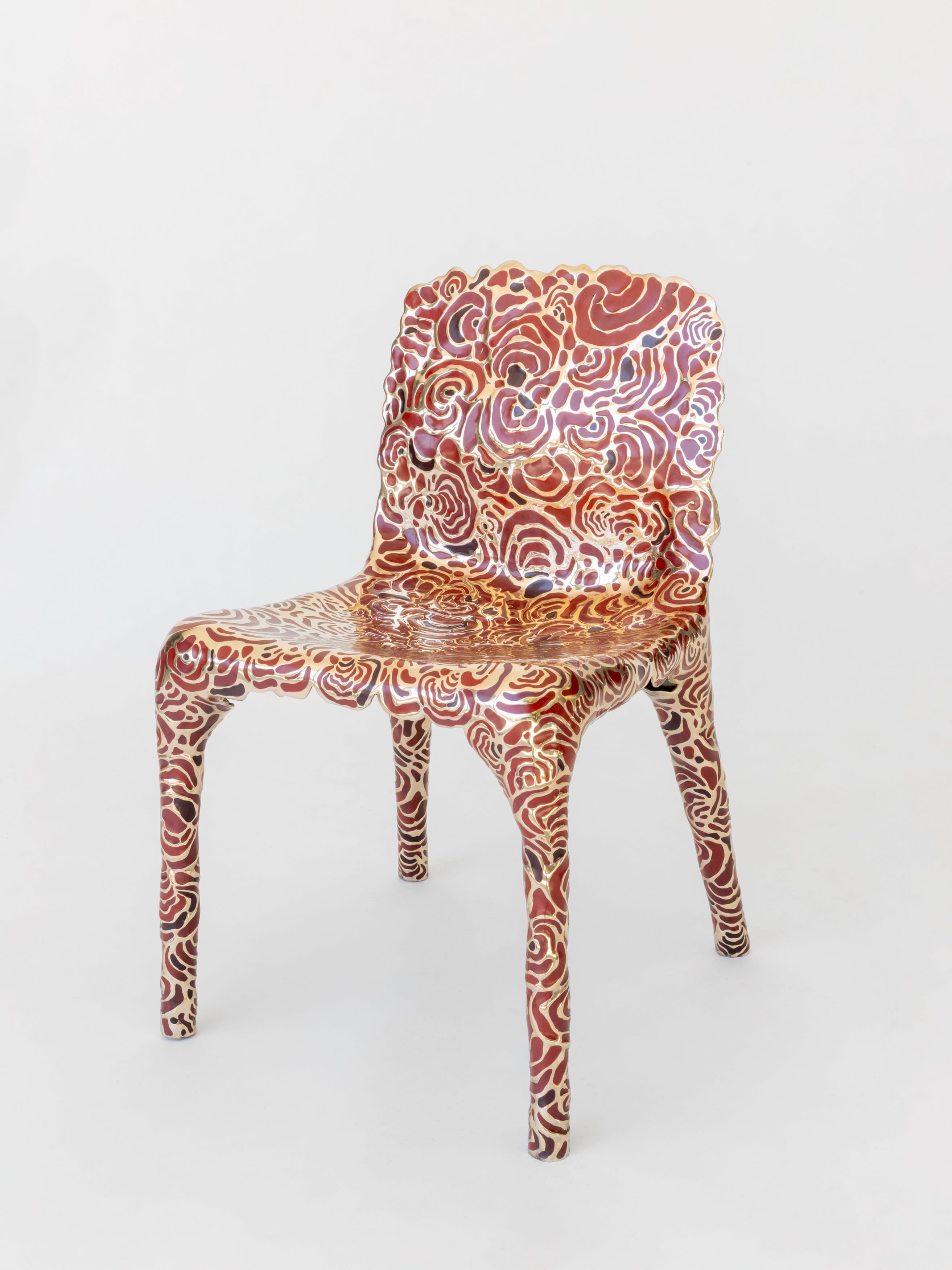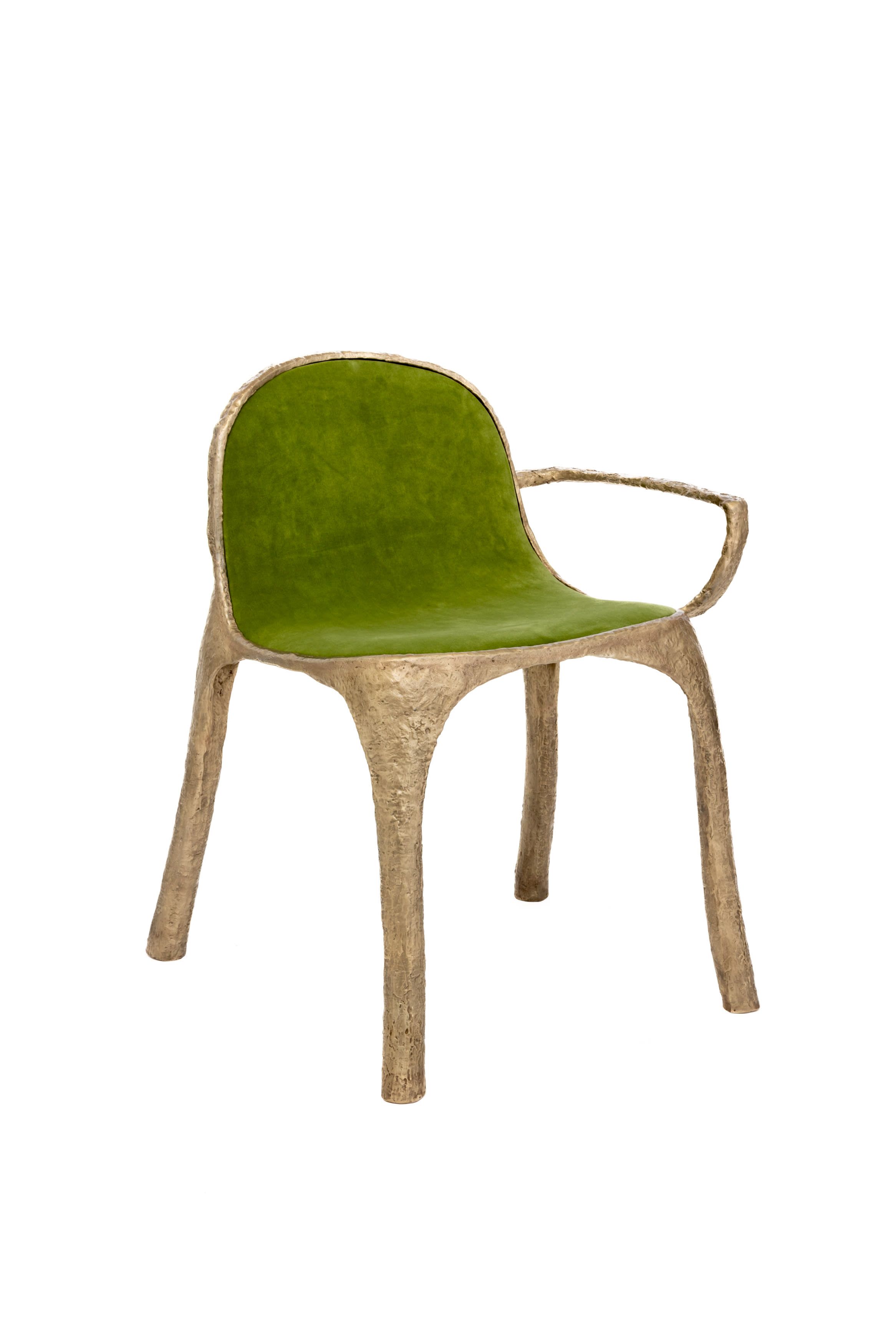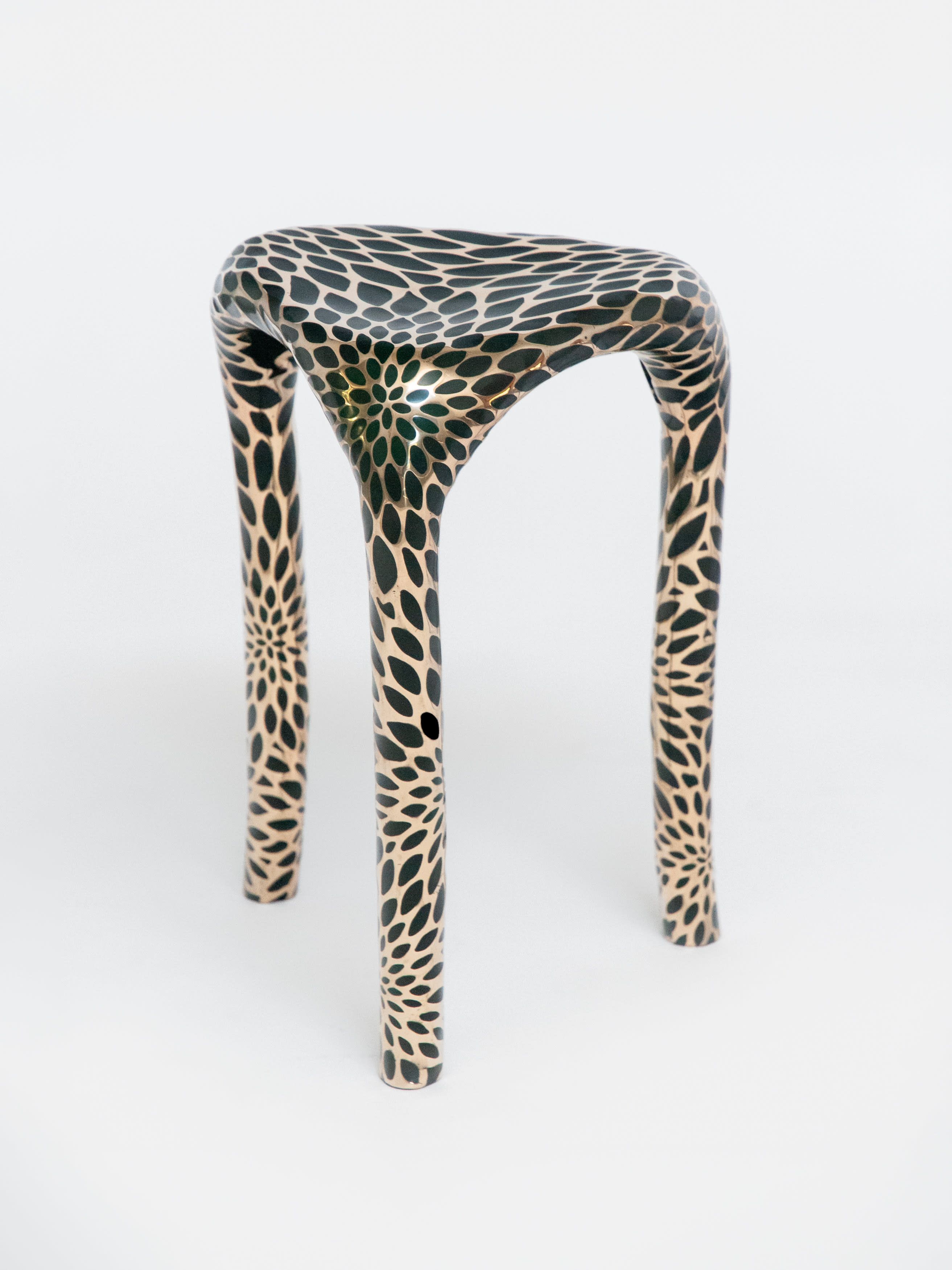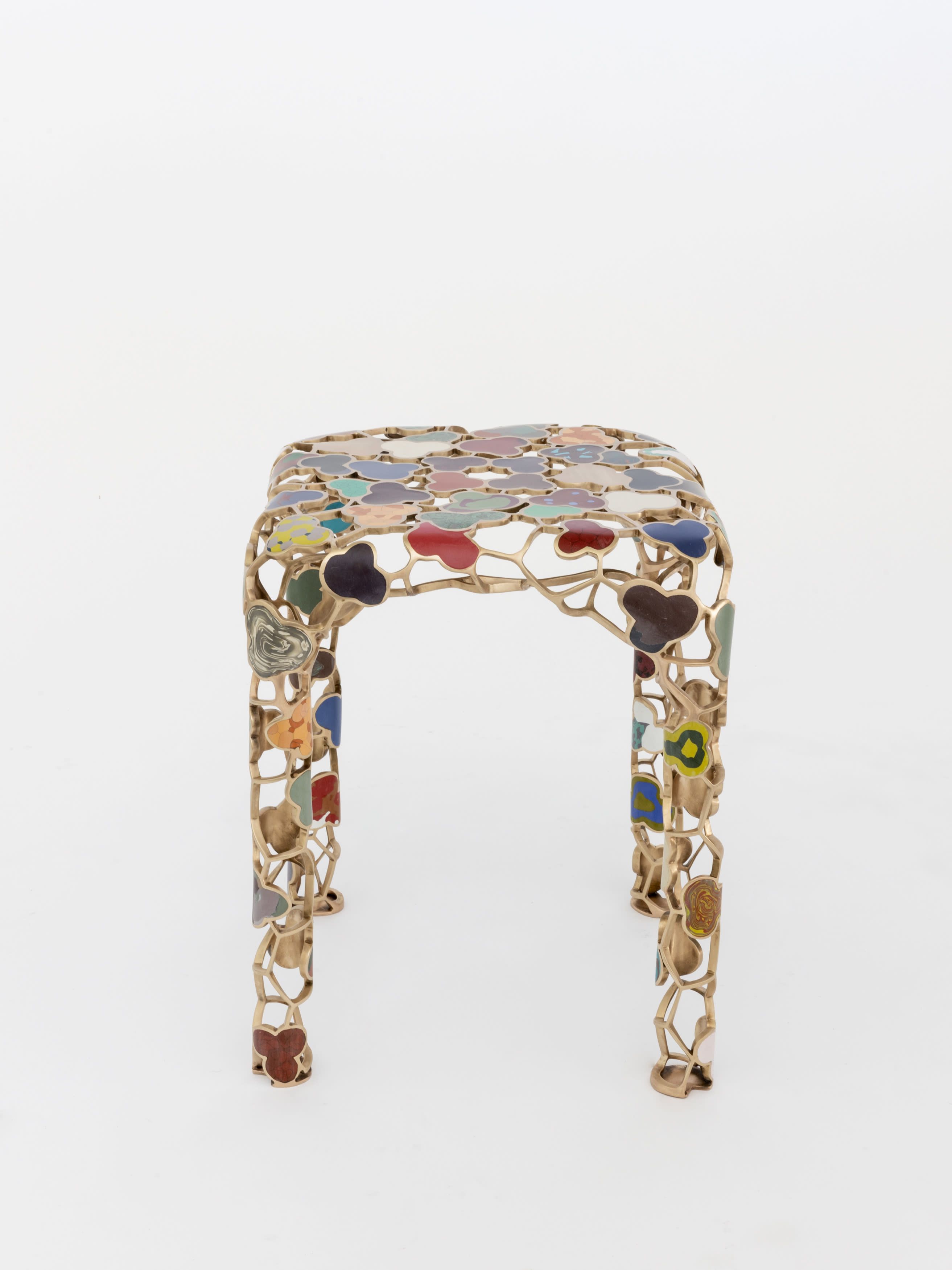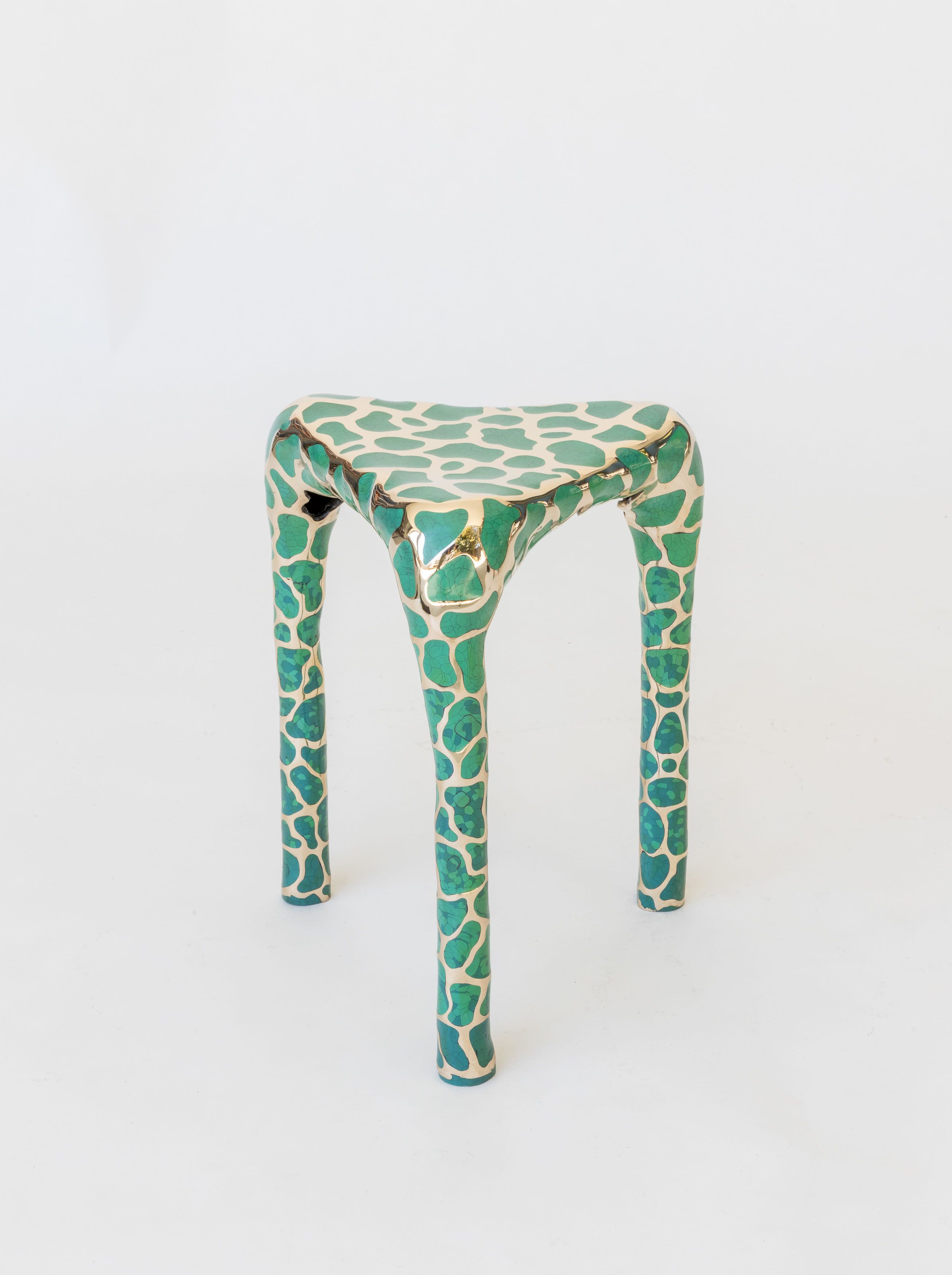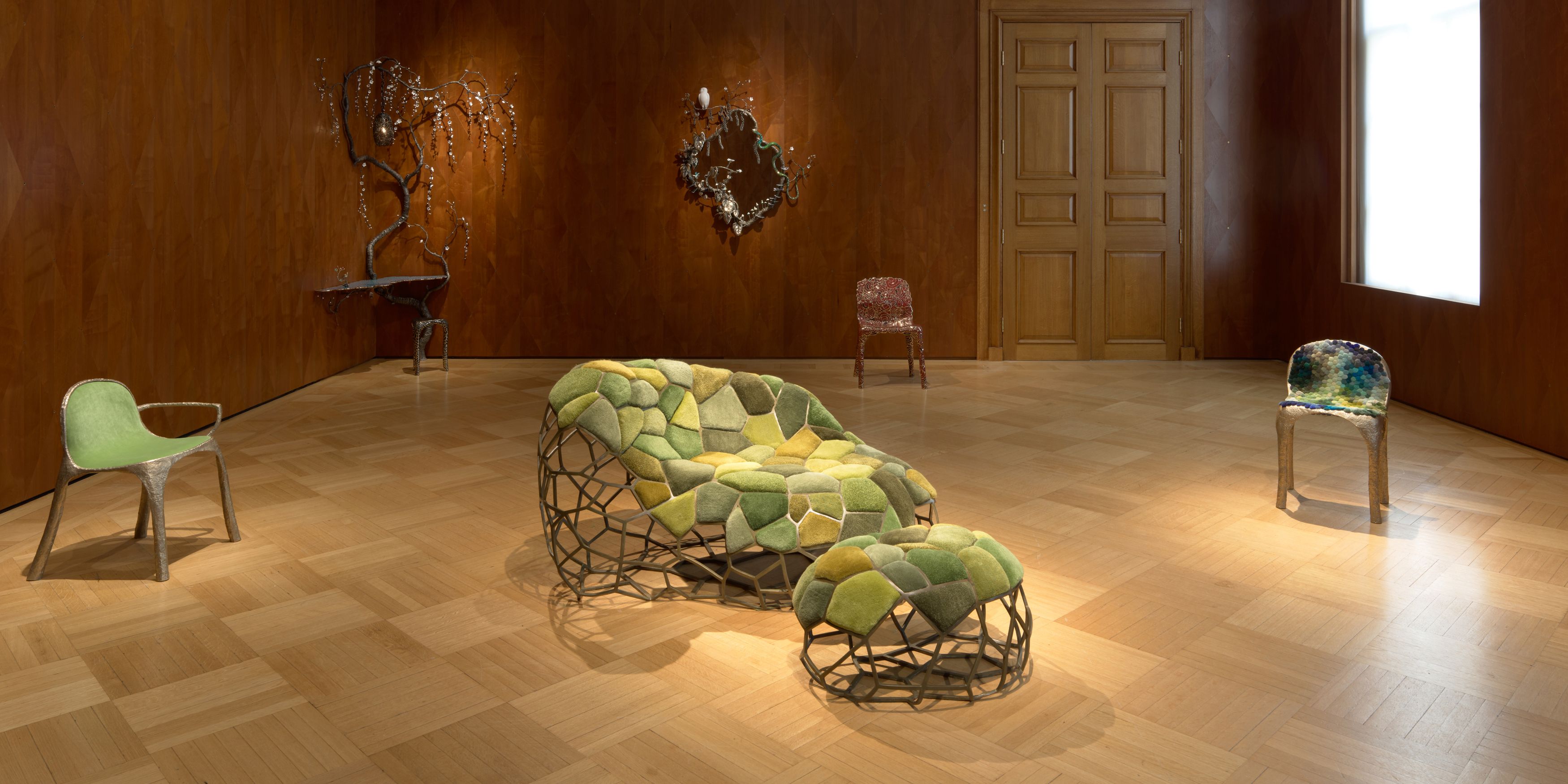
From nature Wiseman has gleaned that perfection is not wholeness, that variation is what stimulates wonder and, that destruction is a—perhaps even the most essential—font of creation. The process of casting, itself a constant alteration of positive and negative shapes, demands destruction as a precondition of creation.
Installation Views
Artwork
David Wiseman | Works from the Lost Valley
Essay by Mayer Rus
In his latest body of work, David Wiseman has shifted his focus from architectural immersion—sprawling installations of walls, ceilings, and entire rooms—to the more intimate scale of chairs, tables, mirrors, and other functional forms. Moving from large-scale installations to discrete objects may at first seem like a contraction in scope, but instead the shift feels more like to an expansion of vision and confidence. The wonder-evoking magic of Wiseman’s bespoke environmental interventions is now distilled into individual objects of extraordinary power, poignancy, and beauty. Like an ironic spin on the Modernist axiom that less is more, his chairs and mirrors offer immersive experiences every bit as rich and layered as those of his meticulously wrought spatial explorations. Alive with curiosity, affection, and astonishing technical mastery, the new pieces dance joyously at the intersection of humanity, artistry, and glorious nature.
There’s a sense of liberation in Wiseman’s orchestration of new materials, forms, and gestures. In addition to his traditional reliance on bronze and porcelain, he has harnessed wood, stone, fiber, concrete, and resin, amplifying his quest to determine which materials are natural attractors capable of living together in happy symbiosis. Consider his Carpet Pom Chair, a bronze frame embedded with a rainbow of carpet poms (i.e., the sample tufts that decorators use to select their colors). Or his Bronze Turkey Tail Chair laden with mounds of wool that read like moss. Both revel in the feeling of childlike awe, embracing the virtues of unapologetic visual and tactile delight as they completely recast the character of bronze as strangely sympathetic to soft, pliable fiber.
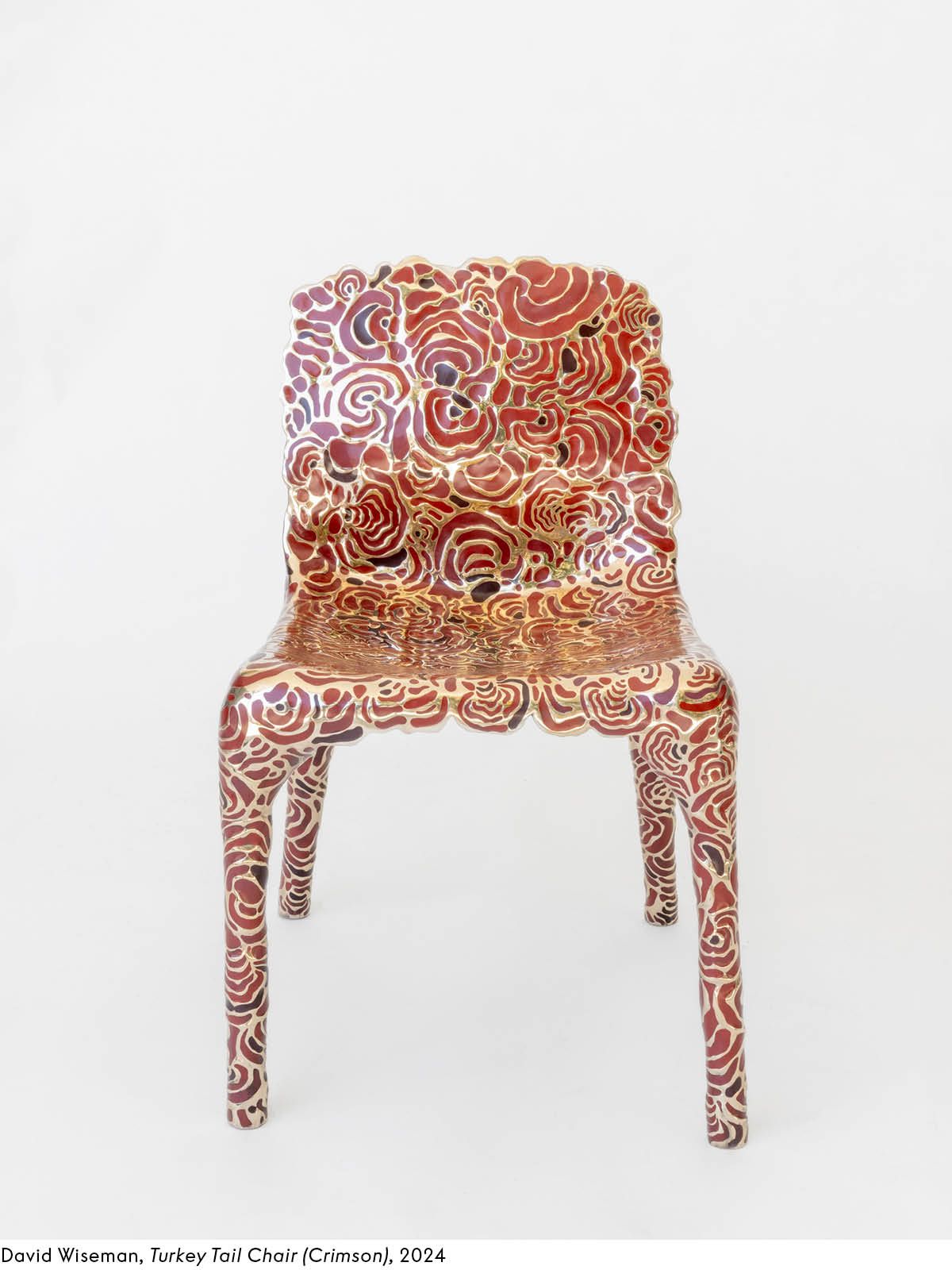
The Lattice Stool and Supernova Stool likewise reflect the experimental nature of the artist’s studio practice. Wiseman and his team of expert artisans are constantly plumbing the possibilities of new material combinations, building up and breaking down, casting and recasting, firing and refiring to find complex, technically daring ways to construct forms that, in the end, read as effortless and natural. The stools revel in the glorious color of embedded resins that seem to have an alchemical reaction to the bronze frames, less applied ornament than dynamic fusion. The pigmented turquoise resin of the Lattice Stool winks at the color of the blue faience Egyptian hippopotamus sculpture at the Metropolitan Museum, suggesting a link between Wiseman’s experiments and the millennia of material innovation that preceded it. The ombre of green to yellow on the Supernova Stool feels like an inspired coalescence of art and nature, bright and beautiful.
Many of the recent works were literally born from Wiseman’s earlier practice. His first Fire Cave was a castoff from a project for a client that, when set in the courtyard of his Frogtown studio, began to draw friends, neighbors, and other artists. It became a focus—the Latin word for fireplace—of both the space and the community. The bronze Fire Cave was initially intended as an upside-down mountain hanging from a ceiling, but it found its true calling when set on its side and brought to life by fire. Again, the elemental form of the Fire Caves, each weighing between 200 and 300 pounds, belies the extraordinary complexity of their fabrication, involving welded steel rods, rubber molds, chicken wire, and lost wax casting. From nature Wiseman has gleaned that perfection is not wholeness, that variation is what stimulates wonder and, that destruction is a—perhaps even the most essential—font of creation. The process of casting, itself a constant alteration of positive and negative shapes, demands destruction as a precondition of creation.
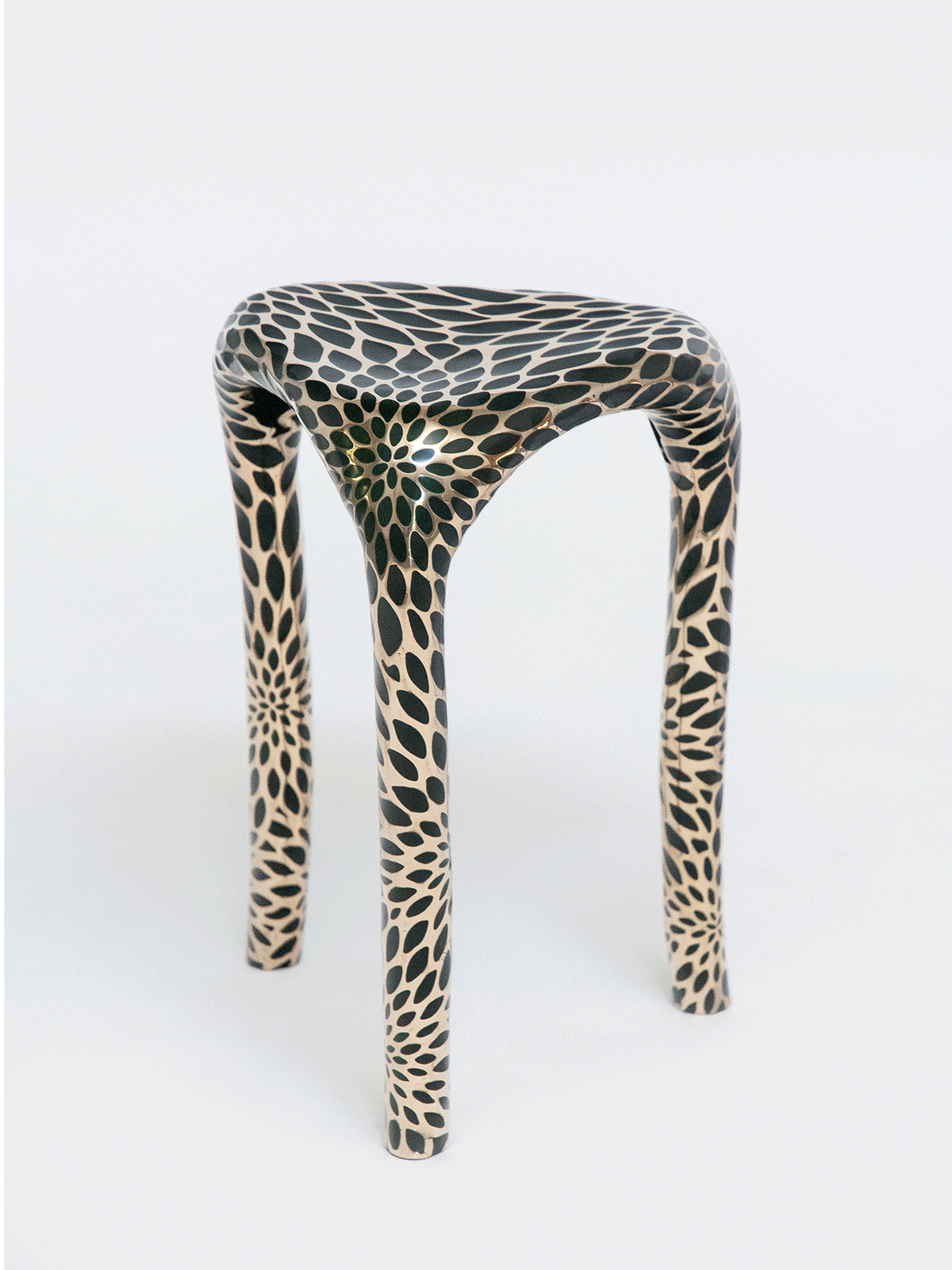
Wiseman has said that his Fire Caves are only complete when they are activated by fire. The pareidolic nature of fire has seduced humans for millennia—after all, art, fire, and storytelling are among the oldest and most enduring hallmarks of our species. And what could be more immersive than a story told around a flickering fire to a group of companions? Sitting around one of the artist’s efflorescent hearths, watching evening kindle into night, time itself is enriched, tessellated moments decanted into a rejuvenating pool of shared experience.
If Wiseman’s earlier work sought to capture the intrinsic essence of nature, his latest creations seem designed to free it. These new objects celebrate the indisputable unity of human nature and the natural world that feeds its soul. Wiseman’s creations honor that oneness with nature by underscoring our shared origins, the fundamental, primeval qualities we share with the rocks, trees, owls, monkeys, turtles, flowers, and, above all, with one another. The abstract patterns and lattices that have always fascinated the artist reveal their organic, elemental roots in singular compositions that remind us that it is pattern not substance that makes one set of carbon atoms into a diamond and another into a pencil. Even at the scale of a small lamp or stool, the generative power of Wiseman’s experiments speaks to the never-truly-static nature of the universe, that the stuff of which we are made is ever-expanding and all-encompassing.

One tends toward the poetic when describing Wiseman’s practice because he employs the techniques of poetry—transformation of matter in unexpected ways, creation of interest and intrigue through rhythm and pattern. Beneath the morphological elegance and old-world craftsmanship of his sublime objects there is poetry and mystery aplenty, as though a magician had pulled back a curtain and let us see the world as it is in all its glimmering, radiant majesty. This latest body of work represents the next iteration of the artist’s quest to create a saturating, satiating Eden.
For more information on the work of David Wiseman please contact,
Jackie Greenberg, Director.
For all press inquires please contact,
Emma Gilhooly, Pelham Communications.
Press
AD Pro
